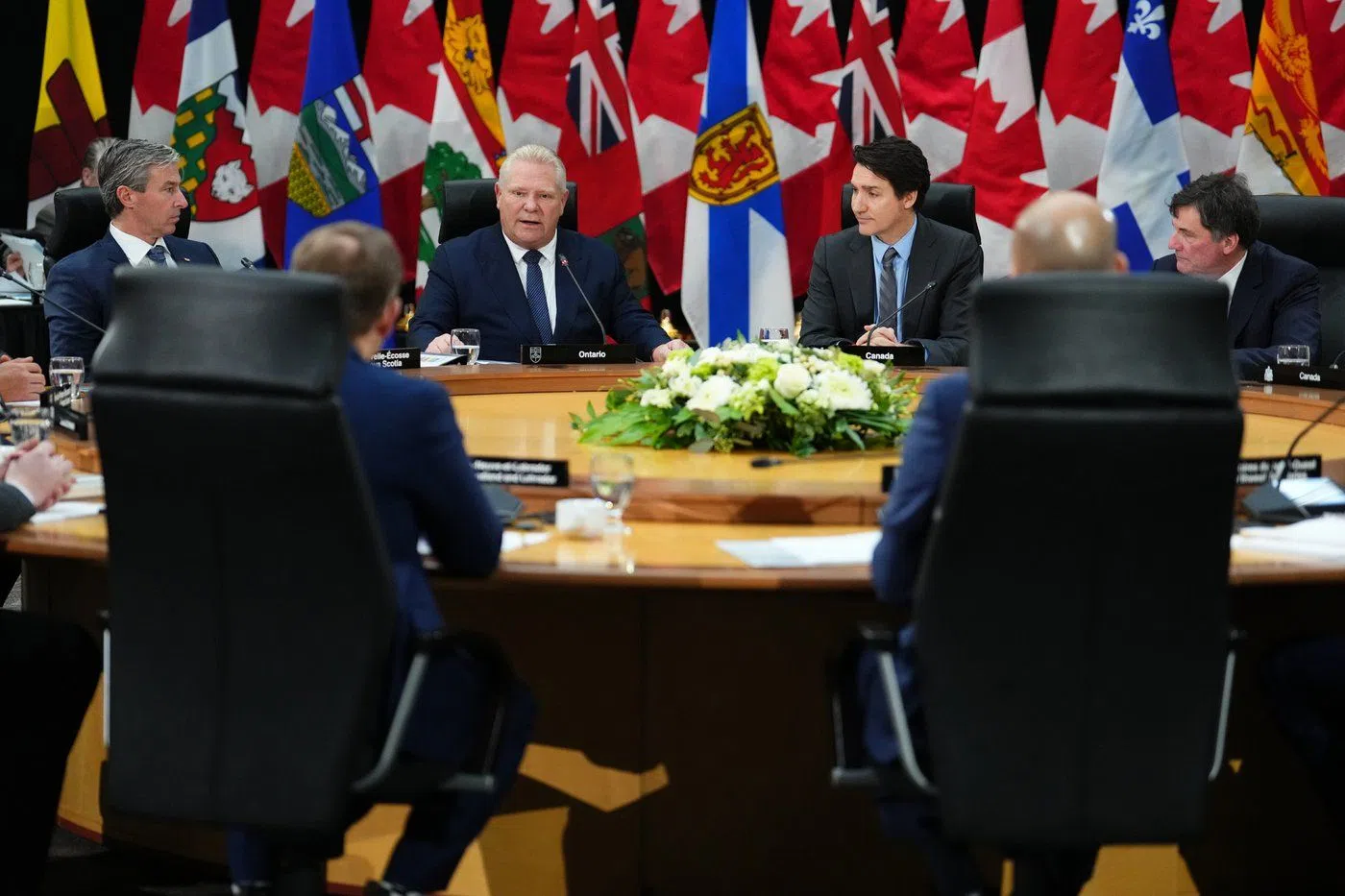
Danielle Smith breaks with counterparts, Trudeau over tariffs response
The country’s premiers emerged from a key meeting about Canada-U.S. relations in Ottawa on Wednesday with a message of unity and a pledge to stand together, with one exception: Alberta’s Danielle Smith, who said she cannot support the federal government’s plan if energy export tariffs could be a part of it.
Prime Minister Justin Trudeau, who chaired the first ministers’ meeting, said it was “highly productive.”
“We have a shared sense of purpose, a shared sense of understanding, and a commitment to stand together on a united path forward,” he said.
Saskatchewan Premier Scott Moe, who has long been a vocal critic of Trudeau’s Liberal government, began Wednesday by echoing Smith’s concerns that blocking energy exports to the United States would trigger a national unity crisis.

